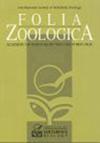栖息地对中欧越冬鸟类的影响
Q2 Agricultural and Biological Sciences
引用次数: 2
摘要
摘要这项工作的目的是分析2003-2009年冬季,中欧三个气候不同地区(波兰东部、波兰北部和德国西部)越冬鸟类的聚集情况。从波兰东部到德国,冬季的严酷程度明显缓和,因此德国应该有更多的鸟类和更大的数量。在491个长度为500 m的样带上记录了73种5445只鸟。生境类型和地点对物种丰富度影响的广义线性模型反映了三种生境类型和研究区位置对物种丰富度的显著影响。物种丰富度受城镇和村庄表面积的正影响,受草地面积的负影响。种数以德国西部最多,波兰东部最多,波兰北部最少。而鸟类的数量则随着绿篱、村庄和城镇面积的增加而增加。大多数鸟类在波兰东部越冬,与波兰北部相比达到更高的值;主要是因为这里有大量的几种最丰富的物种:黄鹀、田野鸟、大山雀。我们可以预期,随着气候变暖,中欧越冬地区的鸟类数量将越来越多。本文章由计算机程序翻译,如有差异,请以英文原文为准。
The effect of the habitat on wintering birds in Central Europe
Abstract.
The aim of this work was to analyse assemblages of wintering birds in three areas of central Europe, that differ in climate: eastern Poland, northern Poland and western Germany in winter in 2003-2009. The severity of winter moderates distinctly from eastern Poland to Germany, so there ought to be more species and larger numbers of birds in Germany. 5445 birds from 73 species were recorded on the 491 transects with a length 500 m. Generalized linear models of the influence of habitat types and localities on the species richness reflected the significant effect of three habitat types and study area location. The species richness was positively affected by the surface area of towns and villages, and negatively by that of grassland areas. The most species were recorded in W Germany, in E Poland, and the fewest in N Poland. While, numbers of birds increased with increasing areas of hedgerows, villages and towns. Most birds wintered in eastern Poland, and reached higher value compared to N Poland; mostly because of large numbers of a few of the most abundant species: yellowhammer, fieldfare, great tit. We can expect that, with warming climate, the wintering areas in central Europe will host increasingly significant bird numbers.
求助全文
通过发布文献求助,成功后即可免费获取论文全文。
去求助
来源期刊

Folia Zoologica
生物-动物学
CiteScore
1.70
自引率
0.00%
发文量
0
审稿时长
3 months
期刊介绍:
Information not localized
 求助内容:
求助内容: 应助结果提醒方式:
应助结果提醒方式:


